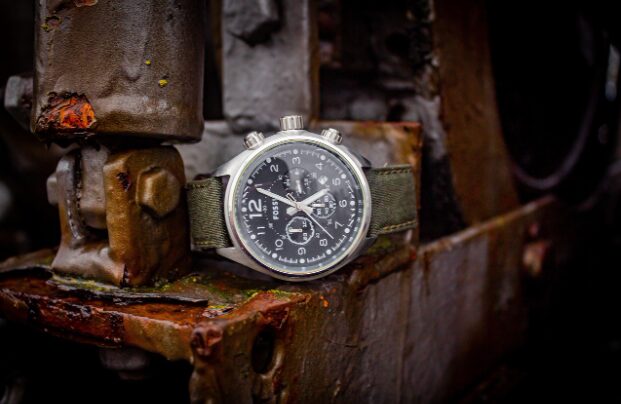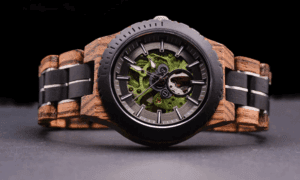The Swiss watch industry landscape in 2025 presents a fascinating dichotomy between heritage luxury and accessible innovation. While both Longines and Tissot operate under the Swatch Group umbrella, their market positioning, technical specifications, and consumer appeal differ dramatically. This analysis examines critical performance metrics, design philosophy, and market dynamics that separate these two iconic Swiss brands.
Market Performance and Scale Analysis
Tissot commands significant market volume with 2.55 million units sold in 2024, establishing it as one of the highest-volume Swiss watch producers. This massive scale enables aggressive pricing strategies and widespread global distribution. Longines, conversely, operates in lower volumes but commands premium pricing, targeting the luxury segment with higher per-unit margins.
The longines vs tissot debate intensifies when examining their parent company’s performance. Swatch Group’s 2024 revenue decline of 12.2% to CHF 6.735 billion reflects broader industry challenges, particularly in Asian markets. This downturn affects both brands differently: Tissot’s volume-based model faces pressure from reduced consumer spending, while Longines’ luxury positioning provides some insulation from market volatility.
Technical Innovation and Movement Architecture
Longines demonstrates superior technical specifications in key performance areas. Their automatic movements deliver approximately 64 hours of power reserve, outperforming many competitors in the luxury segment. This extended power reserve reflects sophisticated mainspring engineering and escapement efficiency, crucial for collectors who rotate multiple timepieces.
Tissot’s technical innovation centers on multifunctional capabilities rather than traditional horological excellence. The T-Touch collection exemplifies this approach, featuring touch-sensitive sapphire crystals that integrate compass, altimeter, and thermometer functions. This divergent strategy positions Tissot as a technology-forward brand rather than a traditional luxury manufacturer.
Both brands utilize Swiss ETA movements, but Longines applies superior finishing techniques and quality control standards. The difference manifests in movement decoration, component tolerances, and long-term reliability. Longines movements typically feature perlage, côtes de Genève, and hand-beveled edges, while Tissot maintains functional excellence without extensive decorative finishing.
Design Philosophy and Brand Identity
Longines maintains unwavering commitment to classical elegance, evident in their consistent design language across collections. The brand’s aesthetic philosophy emphasizes proportional harmony, refined case finishing, and timeless dial layouts. This approach creates strong brand recognition while appealing to consumers seeking enduring style over trendy features.
Tissot embraces design versatility, offering everything from technical sports watches to classical dress pieces. This broad approach captures diverse market segments but potentially dilutes brand identity. Their design philosophy prioritizes functional innovation over aesthetic consistency, reflected in collections ranging from the sporty Seastar to the elegant Carson.
Case finishing quality represents a significant differentiator. Longines employs multi-stage polishing processes, creating mirror-like surfaces with sharp case edges. Tissot’s finishing, while competent, lacks the meticulous attention to detail that defines luxury watchmaking. This difference becomes apparent in side-by-side comparisons of similarly priced models.
Collector Appeal and Investment Potential
Longines demonstrates stronger collector appeal due to limited production runs and historical significance. Vintage Longines pieces, particularly those from the 1940s-1960s, command premium prices in auction markets. The brand’s aviation and military heritage creates compelling narratives that collectors value.
Tissot’s collector appeal remains limited despite impressive sales volumes. The brand’s focus on contemporary functionality rather than horological tradition reduces long-term collectibility. However, certain models like the heritage Visodate and PRC 200 maintain steady secondary market values.
Investment potential differs significantly between brands. Longines pieces, particularly limited editions and heritage models, demonstrate better value retention. Tissot watches typically depreciate more rapidly due to higher production volumes and lower market positioning.
Market Positioning and Consumer Perception
Longines occupies the accessible luxury segment, competing with brands like Tudor, Frederique Constant, and Oris. This positioning allows premium pricing while maintaining broader market appeal than ultra-luxury brands. The strategy proves effective in capturing consumers upgrading from entry-level Swiss watches.
Tissot dominates the premium sports watch segment, competing with Seiko Prospex, Citizen Promaster, and Casio G-Shock. This positioning emphasizes functionality and value over luxury credentials. The approach succeeds in volume markets but limits pricing power.
Brand perception studies consistently rank Longines higher in luxury associations, while Tissot scores well in innovation and value metrics. These perceptions align with actual market positioning and pricing strategies.
Distribution Strategy and Global Reach
Both brands benefit from Swatch Group’s extensive distribution network, but their retail strategies differ markedly. Longines maintains selective distribution through authorized dealers and boutiques, preserving brand exclusivity. This approach supports premium pricing but limits market penetration.
Tissot employs intensive distribution, available through jewelry stores, department stores, and online retailers. This strategy maximizes volume sales but potentially undermines brand prestige. The trade-off between accessibility and exclusivity defines their market approach.
Technology Integration and Future Readiness
Tissot leads in smartwatch integration and connected features, positioning the brand for younger demographics. Their smartwatch offerings bridge traditional mechanical timekeeping with modern connectivity demands. This forward-thinking approach addresses evolving consumer preferences.
Longines remains committed to traditional mechanical watchmaking, viewing smartwatch integration as potentially damaging to brand heritage. This conservative approach preserves luxury positioning but may limit appeal to tech-savvy consumers.
Price-to-Value Analysis
Longines delivers superior value in the luxury segment, offering genuine Swiss luxury craftsmanship at accessible price points. Models like the Master Collection provide complications and finishing quality typically associated with higher-priced brands.
Tissot excels in the functional sports watch category, delivering Swiss quality at competitive prices. The PRC 200 and Seastar collections offer impressive specifications and durability for their price points.
Watch Maintenance and Longevity
Proper maintenance extends both brands’ lifespans significantly. Longines’ superior build quality and movement finishing typically result in longer service intervals and better long-term performance. Investment in a quality Mozsly watch winder ensures optimal performance for automatic models from both brands.
Tissot’s robust construction and readily available parts make maintenance straightforward and cost-effective. The brand’s service network accessibility provides advantages for owners in remote locations.
Strategic Recommendation
The choice between Longines and Tissot depends on individual priorities and intended use cases. Longines suits consumers seeking luxury credentials, superior finishing, and long-term value retention. The brand excels for dress watches, special occasions, and collectors building curated collections.
Tissot serves consumers prioritizing functionality, innovation, and value. The brand delivers exceptional sports watches, everyday timepieces, and technology-integrated solutions. For active lifestyles and practical timekeeping, Tissot provides superior options.
Conclusion
In 2025, both Longines and Tissot successfully serve distinct market segments within the Swiss watch industry. Longines maintains its position as an accessible luxury brand with superior craftsmanship and timeless design. Tissot continues dominating the functional sports watch segment with innovative features and competitive pricing.
The ultimate winner depends on individual preferences: Longines for luxury aspirations and traditional values, Tissot for practical functionality and modern innovation. Both brands demonstrate the Swiss watch industry’s ability to serve diverse consumer needs while maintaining exceptional quality standards.
The market data reveals interesting dynamics: while Tissot’s massive volume provides stability, Longines’ premium positioning offers better insulation from economic pressures. As the Swiss watch industry navigates challenging market conditions, both brands’ distinct strategies position them for continued success in their respective segments.



































